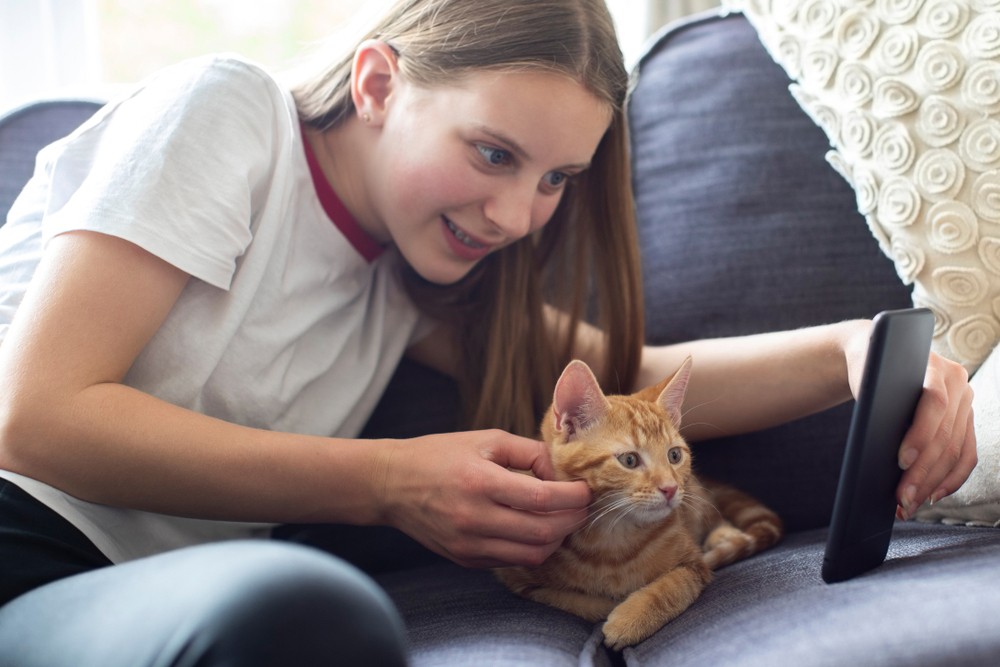Cats are often unpredictable, hard to read, and aloof. And, for many cat lovers, this is part of their appeal. Most people struggle to read a cat’s mood, so can we expect artificial intelligence, which claims to mimic human intelligence, to read a cat’s emotions or tell when our favorite moggy is happy? AI can estimate a cat’s happiness by analyzing body language and vocalizations, but it still cannot fully replace the nuanced understanding of the cat owner.


The Ultimate Poker Face
The biggest challenge when trying to figure out a cat’s emotions is that they have developed an incredible poker face. They are not social animals like humans and, in the wild, cats do not express pain, distress, or any other emotion for fear of being challenged by rivals, or attacked by predators.
Although most domesticated cats live luxurious lives, free from the threat of wild animals, they retain many of their wild instincts. Whether the AI can detect micro-expressions or see the cat’s face is yet to be seen.
Body Language
Using cameras and learning from past footage of cat movements, AI can recognize, identify, and use body movements to determine a cat’s mood. Although they don’t give much facial expressions, movements like raising their tail or stroking their tail can be a good way to tell a cat’s mood.
A cat rubbing its head against its owner’s leg or hand is also a good mood indicator, but so are raised hackles on the neck. These are all fairly obvious movements that the AI should be able to easily detect and use those movements to give the best guess of a cat’s mood.

Vocalizations
Some cats make a lot of noise, and some cats are quiet. But, some cats tend to be more vocal when they are under threat or feeling anxious. On the other hand, some cats may not readily vocalize in these situations. A change in vocalization patterns is an indication that your cat is going through some emotional changes.


Context Background
The key to all possible signs of anxiety, fear, or even happiness, is context and individuality. Cat play closely mimics hunting, which means a cat playing can also have similar body language and facial expressions. Some cats may have happier facial expressions while they are playing, and if you have more than one cat, they may have different facial expressions when playing with another cat than when playing with toys.
The point of AI is that it learns. Give it enough background information and let it study the cat’s behavior and the advanced AI will probably be able to determine, at least with a reasonable degree of success, whether a cat is happy or not. However, it is unlikely to determine this from a meeting or watching a cat for a short time.
Can AI Tell Us If AI Can Tell If A Cat Is Happy?
When we asked an AI tool this question, it gave a long answer that began by saying that AI can estimate a cat’s emotional state using facial recognition, body language, vocalizations, and patterns of behavior, while pointing out the differences between individual cats and the need for context when measuring these patterns.
It signed off by saying that while AI can provide insight, it should only ever be used to complement a human’s understanding and observation.



Conclusion
AI aims to mimic or mimic the intelligence of humans, which means it learns and learns. AI needs background and context, and with that, it can determine a cat’s mood with a reasonable success rate.
Considering many people struggle to know when a cat is happy, an AI, armed with the right information, could achieve a similar result. However, no one knows their own cat better than that cat’s owner, and they are the most likely to determine the mood of their feline companion.
Featured Image Credit: Monster Ztudios, Shutterstock


